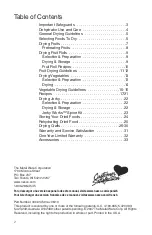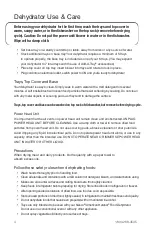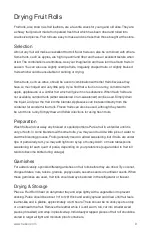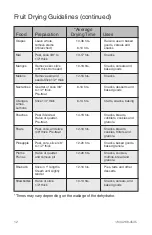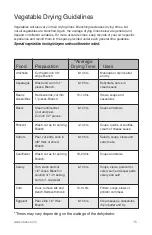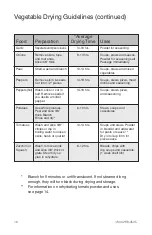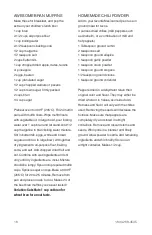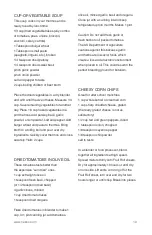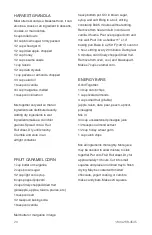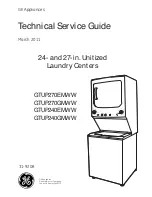
www.nesco.com
5
General Drying Guidelines
There are no absolutes and quite a few variables in food dehydration. The only way to
become proficient is to dry, dry, and dry some more! Certain varieties of produce, the
humidity in the air, and even methods of food handling make a difference in the drying time
and quality of dried product.
• Experiment with different thicknesses of produce, pretreatment
versus no pretreatment, and different rehydration methods.
You will determine what works best for your particular needs
and preferences.
• To save nutrients and produce a quality product, it is necessary to
work fast in preparing foods to dry. Once placed in the dehydrator,
foods need to dry continuously for the recommended time. Do not
turn off the dehydrator and leave partially dried foods sitting on the
trays, as they may spoil or develop “off” flavors.
• Spread all foods evenly to dry in single layers. If slices overlap, the
areas that are overlapping will take twice as long to dry.
• Do not add fresh produce to a partially dried batch. It will slow the
rate of drying for both products. It is possible however, to combine
partially dried foods onto fewer trays.
• Many people have more than one Nesco
®
/American Harvest
®
dehydrator.
If you have two, it’s easy to combine a load from both dehydrators after
a few hours and start a new batch in your second dehydrator using
the remaining trays.
Selecting Foods To Dry
Select the best quality produce at the peak of ripeness and flavor. Wash carefully to
remove debris, dust and insects. Cut away any bruised or damaged sections.
Labeling
All dehydrated foods should be labeled with the name of the product, date dried and
quantity or weight. Clear labeling allows you to rotate foods to minimize waste
and nutrient loss.
Storage
The storage area should be cool, dry, and as dark as possible. The darker and cooler the
storage area, the longer the dehydrated foods will last with good quality and nutritional
value. For every 18°F (10°C) drop in storage temperature, the shelf life of dehydrated foods
increases three to four times. The ideal storage temperature for dehydrated food is 60°F
(15°C) to below freezing. The ideal storage place is your freezer or refrigerator, particularly
for storing low-acid foods such as meats, fish, and vegetables.
Summary of Contents for WA17577H
Page 1: ......




